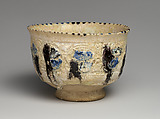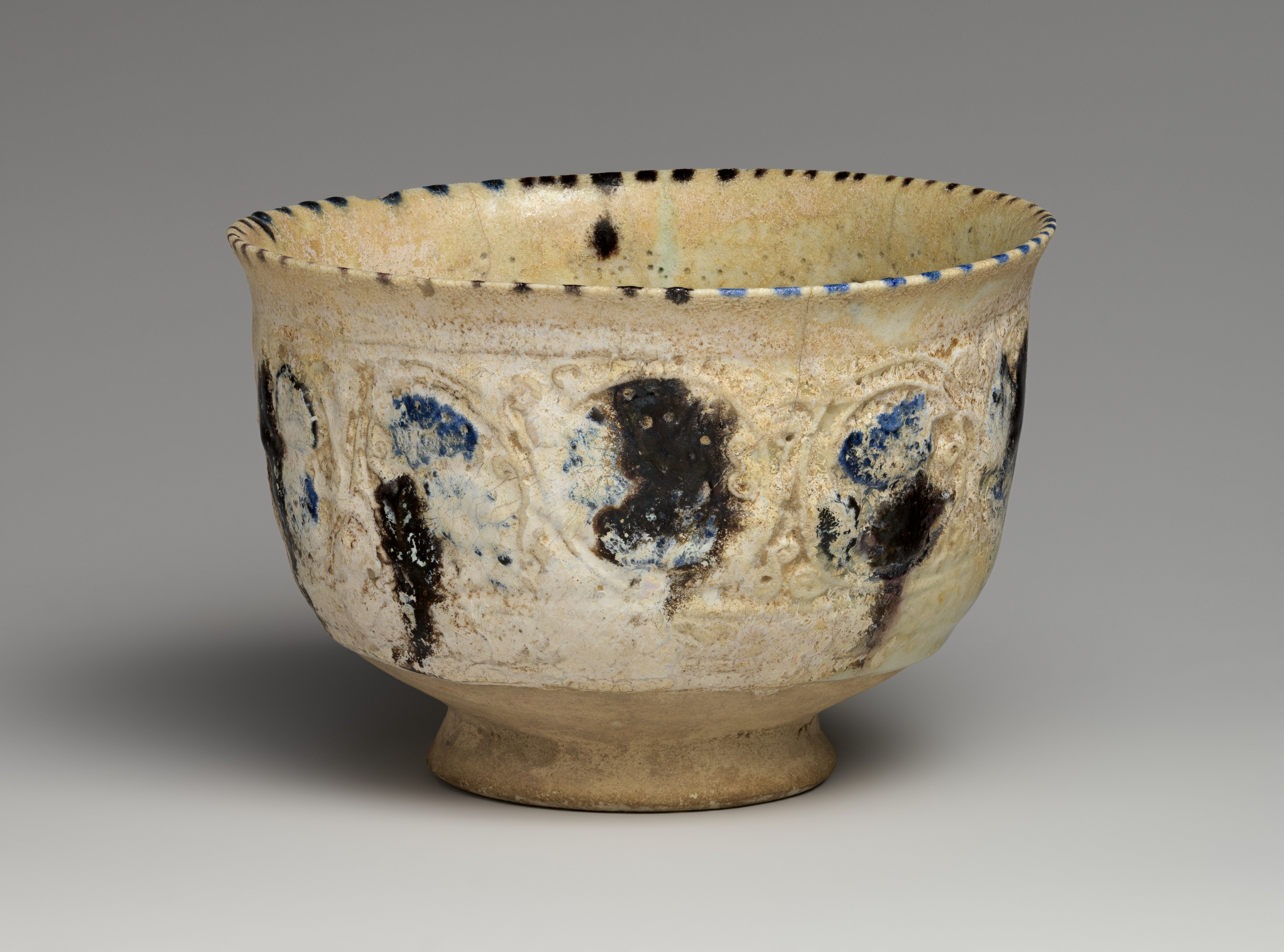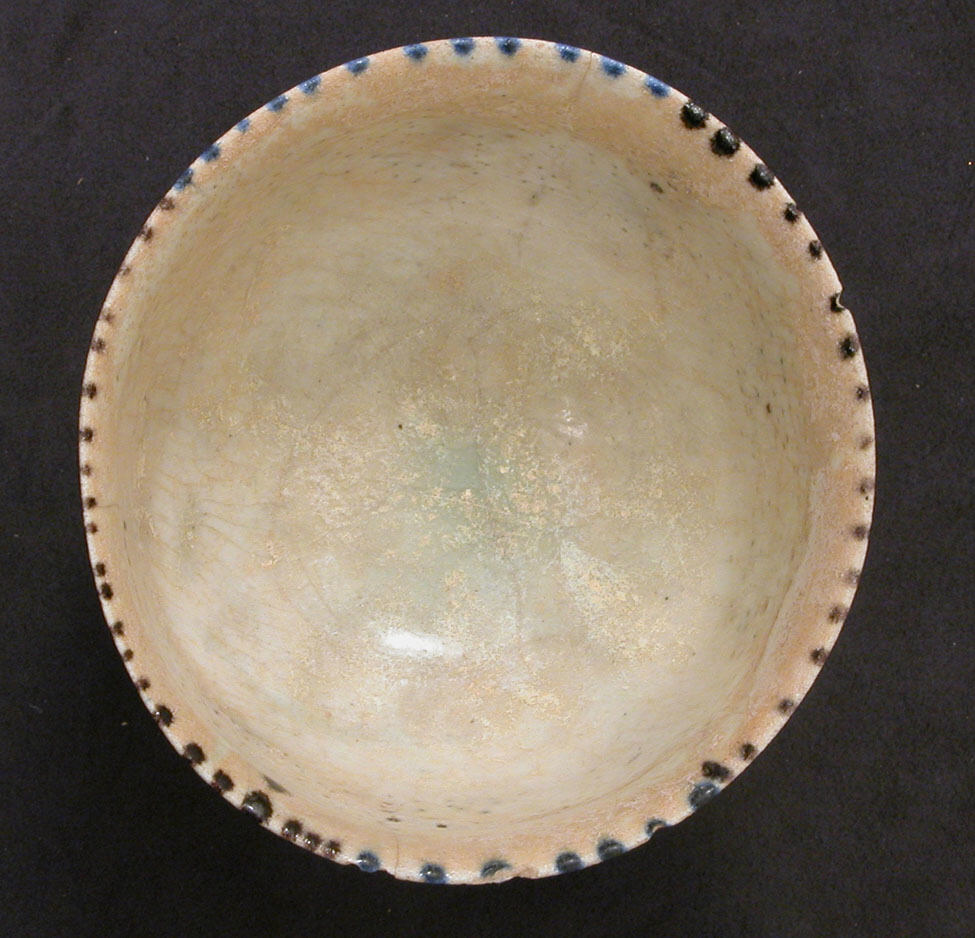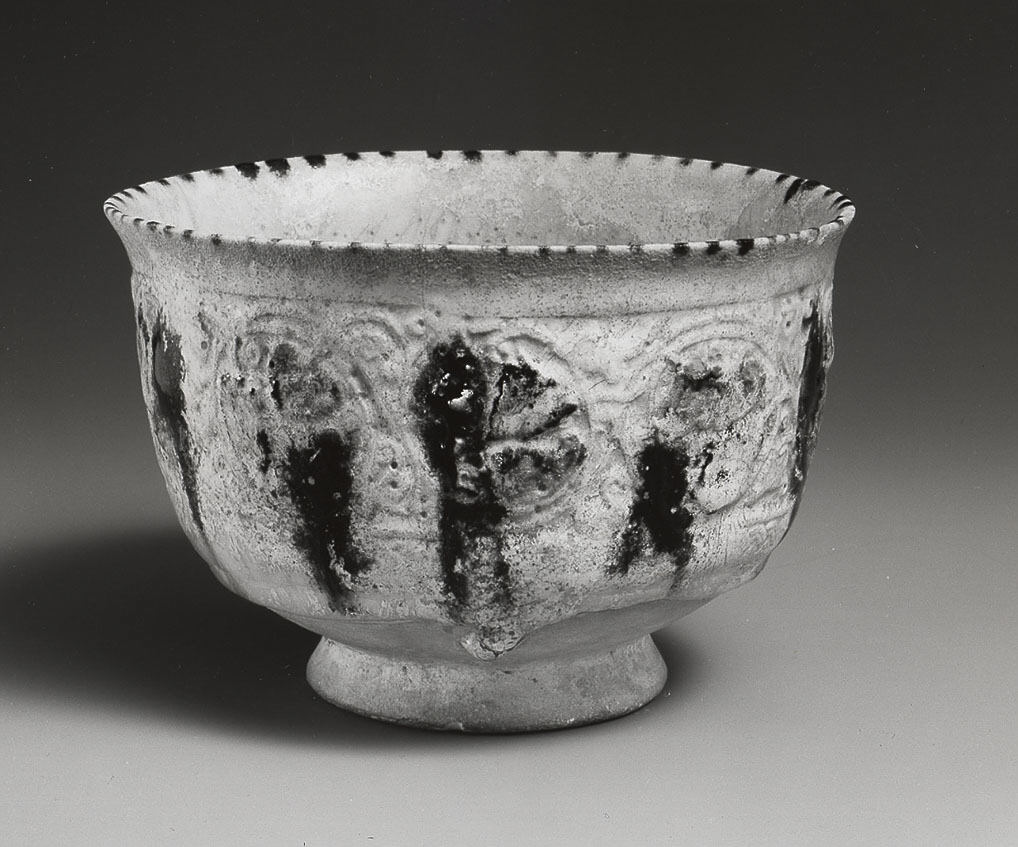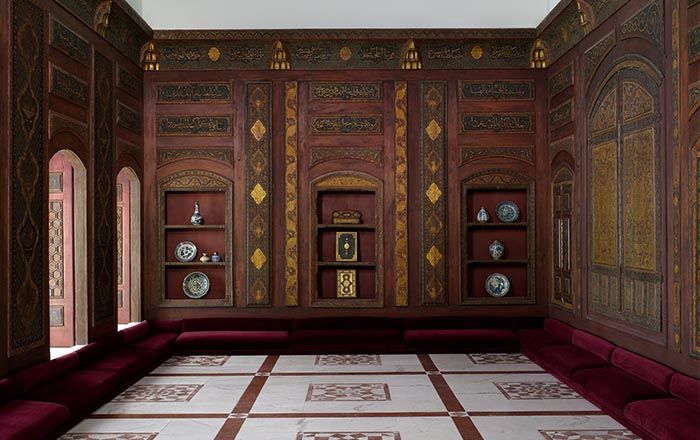Bowl with Revolving Scrolls
Not on view
This vessel was likely molded, then pierced with tiny holes, incised with a sequence of revolving scrolls and a plaited band, then painted and glazed. By covering the holes, the glaze creates a light-through effect. While the shape and the technique speak of a shared aesthetic with Iranian ceramics of the same period, this vessel represents a distinct development attested in 12th-century Afghanistan.
The bowl came to the Museum only in 1998 as a gift from the Mansour Gallery. It allegedly came from Bamiyan in present-day Afghanistan which has important archaeological sites dating back to the 4th–9th centuries when the town was a key Buddhist site up to the 12th century.
This image cannot be enlarged, viewed at full screen, or downloaded.
This artwork is meant to be viewed from right to left. Scroll left to view more.
